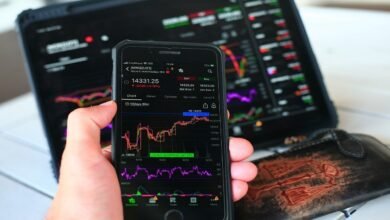Wall Street economists expect ‘friendly’ U.S. inflation data this Friday

Expectations about the future path of Federal Reserve interest-rate policy has been on a roller coaster this year and the next potential swoon could come Friday with the release of the Fed’s preferred inflation measure of consumer inflation.
Going into the week, the Fed is seen in a holding pattern, based on the hawkish policy comments in the minutes of the May policy meeting published last Wednesday.
The minutes revealed the Fed was shaken by the high inflation reports seen in January, February and March. Some policymakers had even raised the possibility of rate hikes. In addition, a “number” of officials saw the risk that financial conditions are not sufficiently restrictive to slow demand and inflation.
And so rate cuts, if they happen at all in 2024, are seen by many as more of a possibility for late in the year, possibly December.
Krishna Guha, vice chairman of Evercore ISI, said hawks and doves at the Fed are going to watch closely over coming 3-4 months to see who wins “a horse race in the data.”
The dovish thesis is that the first quarter inflation spike was mostly backward looking and the economy and labor markets are moderating in which case the Fed might cut rates, Guha said. The hawkish thesis is that the economy is still too strong to bring inflation down, and see a more extended policy pause, he added.
There are Wall Street economists in both of these camps. Traders in derivative markets now expect only one rate cut this year. They have priced in a 50-50 chance of a rate cut in September, with greater odds of a the move coming in November.
April personal consumption expenditure (PCE) price index
Friday, 8:30 a.m. Eastern
According to a survey of economists by the Wall Street Journal, economists expect the PCE price data, which is Fed’s favorite inflation measurement, should be an improvement compared to the first quarter, “but only a small one,” according to Michael Gapen, head of U.S. economics at Bank of America Global Research.
Core inflation will likely print at 0.2%, slightly better than the 0.3% rate see in March, according the Wall Street Journal survey. That will be the lowest reading since December.
In the same report, the government will release consumer spending data, which should moderate to 0.4% gain from 0.8% rise in March. Income growth is expected to rise 0.3% down from 0.5% in the prior month.
“All-in-all, this report should be a Fed-friendly release that points to further moderation in consumer demand and real income growth that is gradually reducing the temperature on core inflation, keeping the door open for a couple of rate cuts later this year,” said Scott Anderson, chief U.S. economist at BMO Capital Markets.




